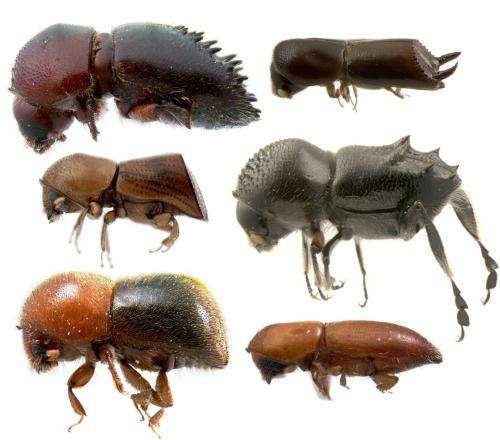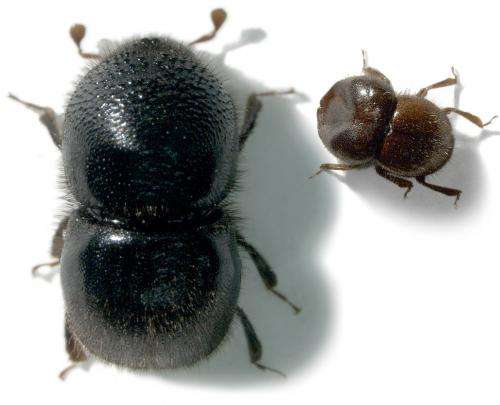Meet the beetles—the Xyleborini of New Guinea

Xyleborini is one of the most diverse and abundant groups of scolytine beetles worldwide, and they are also becoming very important invasive insect pests around the globe. In the U.S., the redbay beetle is threatening the existence of the avocado industry in Florida, and Asian ambrosia beetles are replacing native fauna throughout the southeastern U.S. and are attacking trees in nurseries. However, despite their economic importance, very few comprehensive monographic works deal with xyleborine beetles.
Now a new book published by the Entomological Society of America, Xyleborini of New Guinea, a Taxonomic Monograph (Coleoptera: Curculionidae: Scolytinae), integrates the most comprehensive classification of Xyleborini with recent works to produce the first phylogenetic, fully character-based system. Authors Jiri Hulcr (University of Florida) and Anthony I. Cognato (Michigan State University) obtained representatives of almost all species known from Papua New Guinea and used DNA sequencing to test the generic classification of the group and, in some instances, species boundaries.
"This is probably the most invasive group of beetles in the world," said Dr. Hulcr. "Xyleborinus saxesenii is as common in your backyard as it is in New Caledonia or Japan—and on top of that, many of them look like fuzzy teddy bears with big heads, big eyes, and pom-poms instead of antennae."
Besides their strange appearances, two other things set them apart from others. All of the species in the Xyleborini tribe are fungus farmers, and they are haplo-diploid inbreeders.

"Xyleborini have one of the most fascinating and most prolific reproductive strategies in the animal kingdom," said Dr. Hulcr. "A female lays many female eggs and a single male egg. Then the male fertilizes all of his sisters, which go on to establish their own families. Thus, a single female has the ability to establish a whole new population on a newly colonized continent."
In addition to the book (ISBN: 978-0-9776209-7-5), two online resources are available as supplemental materials: (1) a comprehensive set of photographs of all available New Guinean Xyleborini species, and (2) a set of multiple-entry electronic keys for all genera and all recognized species (available at http://www.ambrosiasymbiosis.org/PNG_Xyleborini).
More information: For more information, and to purchase the book, visit www.entsoc.org/pubs/xyleborini … -taxonomic-monograph
Provided by Entomological Society of America



















